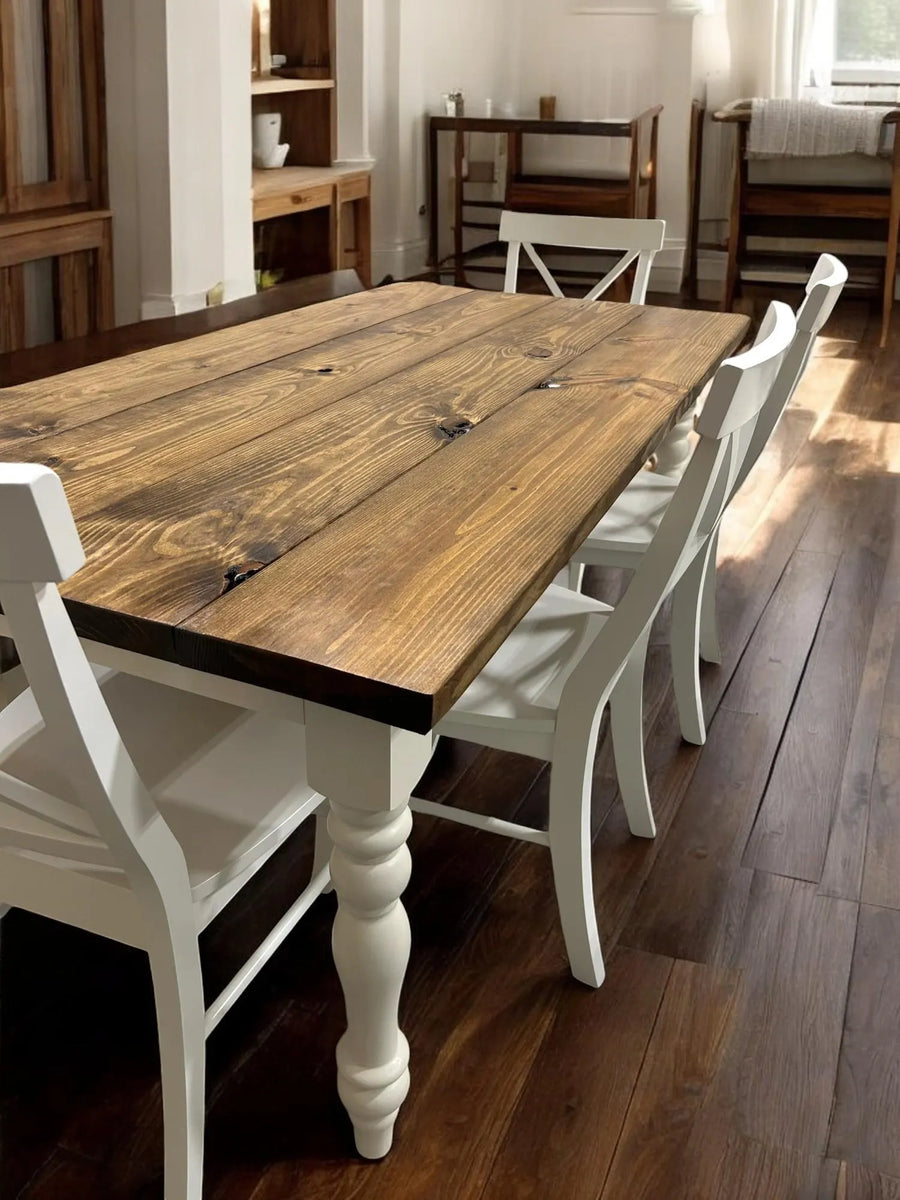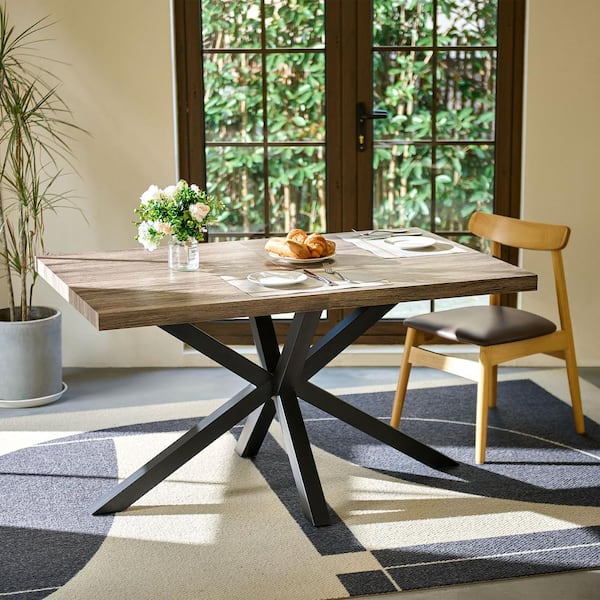Add a Rustic Touch to Your Table with Classic Dining Table Legs Wood
Add a Rustic Touch to Your Table with Classic Dining Table Legs Wood
Blog Article
Checking Out the Various Kinds Of Table Legs Wood for Your Eating Area
The choice of eating table legs wood can profoundly affect both the visual and practical high qualities of your eating area. Solid timber options, such as oak and walnut, offer a classic appearance with unequaled longevity, while engineered timber alternatives supply ingenious layouts that mimic the splendor of all-natural grains. Furthermore, the expanding pattern of reclaimed timber introduces a lasting element that charms to eco mindful customers. As we explore these different options, it ends up being vital to take into consideration not only the visual charm yet also the sensible implications of each material option. What variables should direct your choice?
Strong Timber Options

Unlike engineered materials, solid wood is less prone to bending and damage over time when effectively maintained. Each piece of strong timber is one-of-a-kind, showcasing specific characteristics that include to the beauty and personality of the dining table.
Additionally, solid timber can be completed in various means, varying from all-natural oils to discolored surfaces, allowing house owners to customize their furnishings to match their style. In recap, choosing solid timber for eating table legs not only guarantees structural honesty yet likewise improves the visual allure of the eating area, making it a rewarding financial investment for any type of home.
Engineered Wood Alternatives

Plywood, created from several layers of timber veneer, is stable and specifically solid, making it an outstanding choice for eating table legs. Its layered structure permits it to stand up to changes in moisture and temperature far better than standard strong wood. MDF, on the various other hand, provides a smooth surface for paint or veneering, allowing developers to accomplish a sleek look while keeping structural honesty.
Particleboard, commonly used in affordable options, gives good toughness and is lightweight, making it much easier to deal with. It may not be as sturdy as plywood or MDF. It is necessary to think about the intended use and wanted visual when selecting crafted wood options. These products not just enhance the performance of eating rooms but also enable for better layout flexibility, making sure that conventional and modern designs can exist side-by-side sympathetically.
Reclaimed Timber Features
Recovered timber offers a special blend of sustainability and character, making it a progressively prominent selection for eating table legs. Sourced from old barns, factories, and other structures, reclaimed wood personifies a background that brand-new materials simply can not reproduce. Each item brings its own story, marked by distinctive blemishes, knots, and varying grain patterns, which add to a table's unique aesthetic allure.
Along with its visual charm, reclaimed timber is an ecologically friendly option. have a peek at this website By repurposing formerly utilized materials, it lowers the need for new lumber, thus aiding to lessen and conserve woodlands waste. This lines up with a growing consumer choice for lasting practices in home furnishings.
In addition, redeemed wood is frequently much more durable than freshly collected wood as a result of its age. The natural drying out procedure that reclaimed timber undergoes cause a denser and stronger product, making it less prone to warping and splitting. This improves the longevity of dining tables, permitting them to stand up to the rigors of everyday usage.
Softwood vs. Hardwood
When selecting dining table legs, understanding the differences between softwood and hardwood is vital for achieving both aesthetic and useful objectives. They commonly exhibit a more rustic appearance, making them suitable for casual or country-style dining spaces.
On the other hand, hardwoods, sourced from deciduous trees like maple, cherry, and oak, are renowned for their thickness, stamina, and longevity. The intricate grain patterns and abundant tones of woods give a innovative and classic allure, making them excellent for official dining settings. While hardwoods tend to be extra pricey and much heavier, their durability against wear and tear frequently validates the financial investment.
Inevitably, the choice between softwood and hardwood for eating table legs ought to line up with your design vision, usage demands, and budget plan, making sure that your dining room mirrors your personal design while staying practical over time.

Treatments and surfaces
The aesthetic appeal and longevity of table legs can be significantly enhanced via numerous coatings and therapies. These processes not only protect the timber from damages however also elevate its look, permitting it to match diverse interior designs.
One typical treatment is staining, which penetrates the timber and improves its natural grain while including shade. Spots offer a rich, classy appearance, allowing home owners to match their furniture with existing design. Conversely, clear coatings such as polyurethane or varnish produce a safety layer without altering the wood's original tone, making sure sturdiness versus damage.
In addition, natural oils, like tung or linseed oil, nurture the wood and my link use a subtle shine, all while being green. These oils permit the surface to breathe, protecting against moisture accumulation and possible bending.
For those looking for a rustic beauty, weathered or troubled finishes can be related to develop an aged appearance, including personality to the piece. Eventually, the selection of coatings and therapies depends upon personal choice, desired looks, and the details wood type, making it vital to consider these aspects when picking table legs for your space.
Verdict
In conclusion, the selection of table leg materials dramatically influences both the practical and aesthetic elements of an eating space. Strong woods, engineered options, and recovered alternatives each deal unique benefits, satisfying numerous preferences and demands. Understanding the differences between softwoods and woods, together with appropriate coatings and therapies, permits notified decision-making. Ultimately, the choice of wood type need to align with wanted design, longevity, and ecological considerations, boosting the general dining experience.
The selection of eating table legs wood can exceptionally affect both the useful and aesthetic qualities of your eating space view - Dining Table Legs Wood. Solid timber alternatives, such as oak and walnut, supply a traditional look with unparalleled durability, while crafted timber options supply cutting-edge layouts that simulate the richness of natural grains. Solid wood uses a classic top quality that can elevate the total layout of a dining space. Each item of solid wood is special, showcasing private features that include to the beauty and character of the dining table
Moreover, redeemed timber is frequently a lot more durable than freshly collected wood due to its age.
Report this page